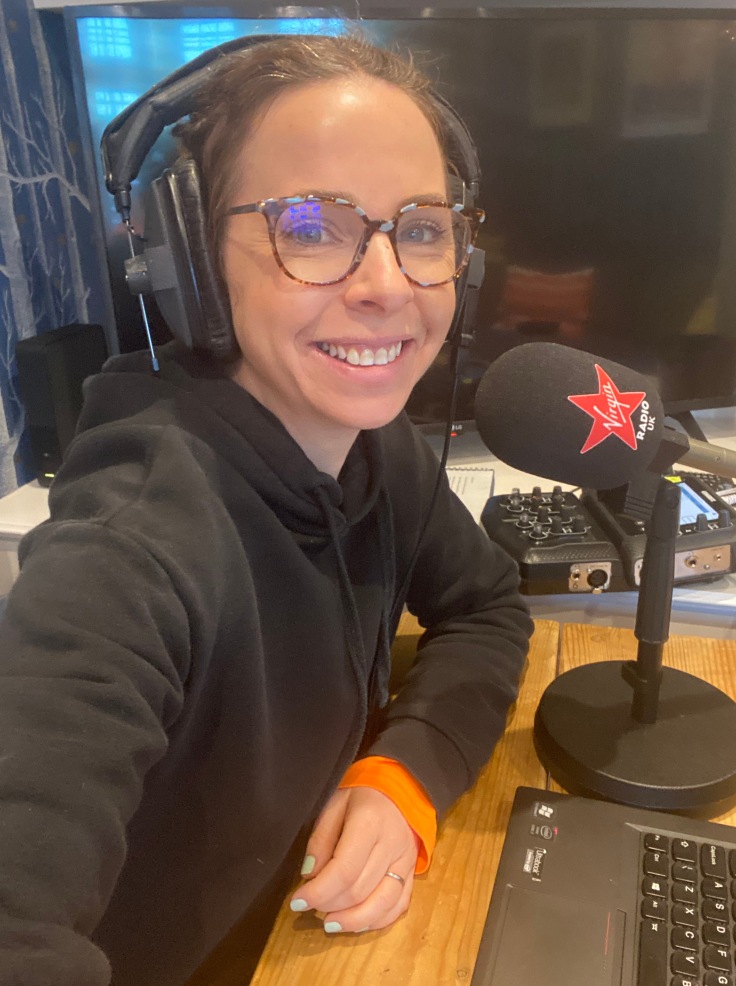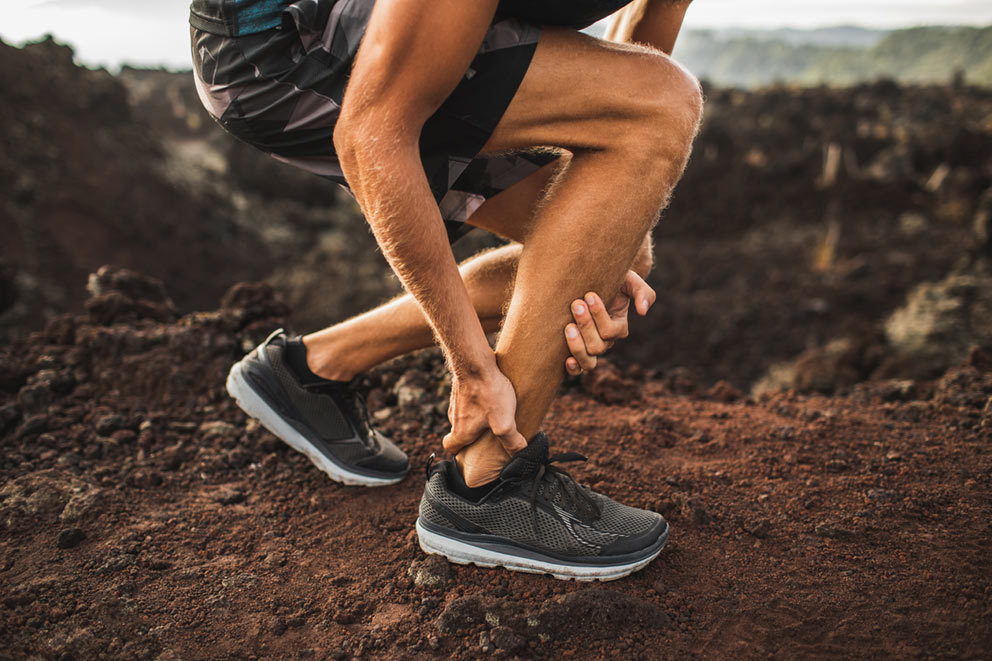Rachel Horne, newsreader and Chris Evan’s co-presenter on Virgin Radio UK.
“My friend Jools recommended I visit Emma James Physio, a specialist pelvic floor physiotherapist at her clinic at Champneys, Tring after I announced I was going to do The London Marathon. (Rachel was cajoled live on the Virgin Radio breakfast show by Vassos, Chris and the team back in November 2019!).
I’d never attempted a long run without desperately needing the loo.
“As soon as I’d said yes to the marathon, I panicked that my weak pelvic floor wasn’t up to it and was going to stop me from running the 26 miles. I’d done the odd bit of cross country before at school and outdoor fitness boot camps but never attempted such a distance or gone for a long run without desperately needing the loo!

“In fact, I used to dread it in summer when I did the Boot Camps and would always wear an incontinence pad, tie my hoodie around my waist and take a towel to sit on in the car on the way home in case the inevitable happened.
“I had three children in just over three years; carrying them put extra pressure on my pelvic floor and then I had complicated births giving me second and third-degree tears which weakened my pelvic floor further and the reason I leak when I run.
“I hadn’t got round to doing anything about it mainly because as one of many 30 and 40-something women who are always busy looking after other people, fixing ourselves goes right down the list of priorities.
It’s almost a badge of honour for women to say they leak.
“I think I’d also just fallen into the trap of just accepting bladder leakage was normal. It’s almost a badge of honour for women to say they leak whether that’s when they run, get on a trampoline with the kids, or sneeze. Everyone laughs about it. You see it on TV adverts where women laugh about having the condition and it’s so normalised that women think they should say nothing and just use an incontinence pad whenever we leave the house.
Emma is a force for good.
“Emma is a force for good. My first visit to her was almost like a therapy session. She took the time to ask me about myself and encouraged me to tell her my story, giving me a safe space to open up. When she said she could fix my bladder leakage I felt like a weight had been lifted off my shoulders. She was wonderful.
“She helped me to realise it’s NOT OK to leak and made me see that unless I took steps to strengthen my pelvic floor, my leakage would just get worse, particularly as I approached the perimenopause and menopause.
“Because of the challenge I was facing, training for the marathon in a little over five months, Emma suggested a multi-pronged attack although I was relieved to hear I didn’t need to have an internal exam, which I know puts many women off sorting out their bladder problems, as I don’t have a prolapse.
“Through Emma’s clinic, I’ve used a combination of pelvic floor strengthening exercises, tried pelvic floor trainer Pelviva, had sessions on the PelviPower chair, and used Secret Whispers and my bladder leakage has dramatically reduced.
Leaking has definitely improved my general wellbeing.
“After just six weeks of support, I was dry after the first mile which was never the case before as I always leaked just after I started to run. Recently, I managed 5km (3.5 miles) over hilly terrain and was completely dry at the end of the run which felt like such a massive, massive achievement. Leaking less has definitely improved my general wellbeing too as I feel more like myself again. I now no longer need to wear a pad EVERY SINGLE DAY and only keep one on for exercise in the unlikely case I might leak.
I no longer need to wear a pad every day.
“Now due to the Coronavirus, The London Marathon is rightly postponed but I do hope to run it later in the year. Once I’ve done that, I don’t think I’ll ever do another marathon ever again! However, I’m planning to continue running between 5 and 10km on a regular basis to get that time to think, feel energised, enjoy the fresh air, and release those endorphins and will be able to do so without always leaking which is just amazing!”



 So don’t panic, tendon pain isn’t as debilitating as it seems. With patience and commitment, we will get you back to your goals, and back even stronger than before!
So don’t panic, tendon pain isn’t as debilitating as it seems. With patience and commitment, we will get you back to your goals, and back even stronger than before!
 Should you have any doubts about your training, be sure to contact us as we would love to help. Just imagine: us making your marathon training (actually) enjoyable!
Should you have any doubts about your training, be sure to contact us as we would love to help. Just imagine: us making your marathon training (actually) enjoyable!
 Having a Personal Trainer will make sure you stick to your programme and push you to your limits during a workout session. Often when you work out solo you can become distracted and don’t push yourself as much. Time is always an excuse as not to work out but having a PT can adjust programs so they are just as affective no matter what the length of time you have available.
Having a Personal Trainer will make sure you stick to your programme and push you to your limits during a workout session. Often when you work out solo you can become distracted and don’t push yourself as much. Time is always an excuse as not to work out but having a PT can adjust programs so they are just as affective no matter what the length of time you have available. 6. Flexibility on Location
6. Flexibility on Location

 The initial goal in managing plantar fasciitis is to reduce pain and inflammation. Your
The initial goal in managing plantar fasciitis is to reduce pain and inflammation. Your 
 Kelvin
Kelvin





Recent Comments